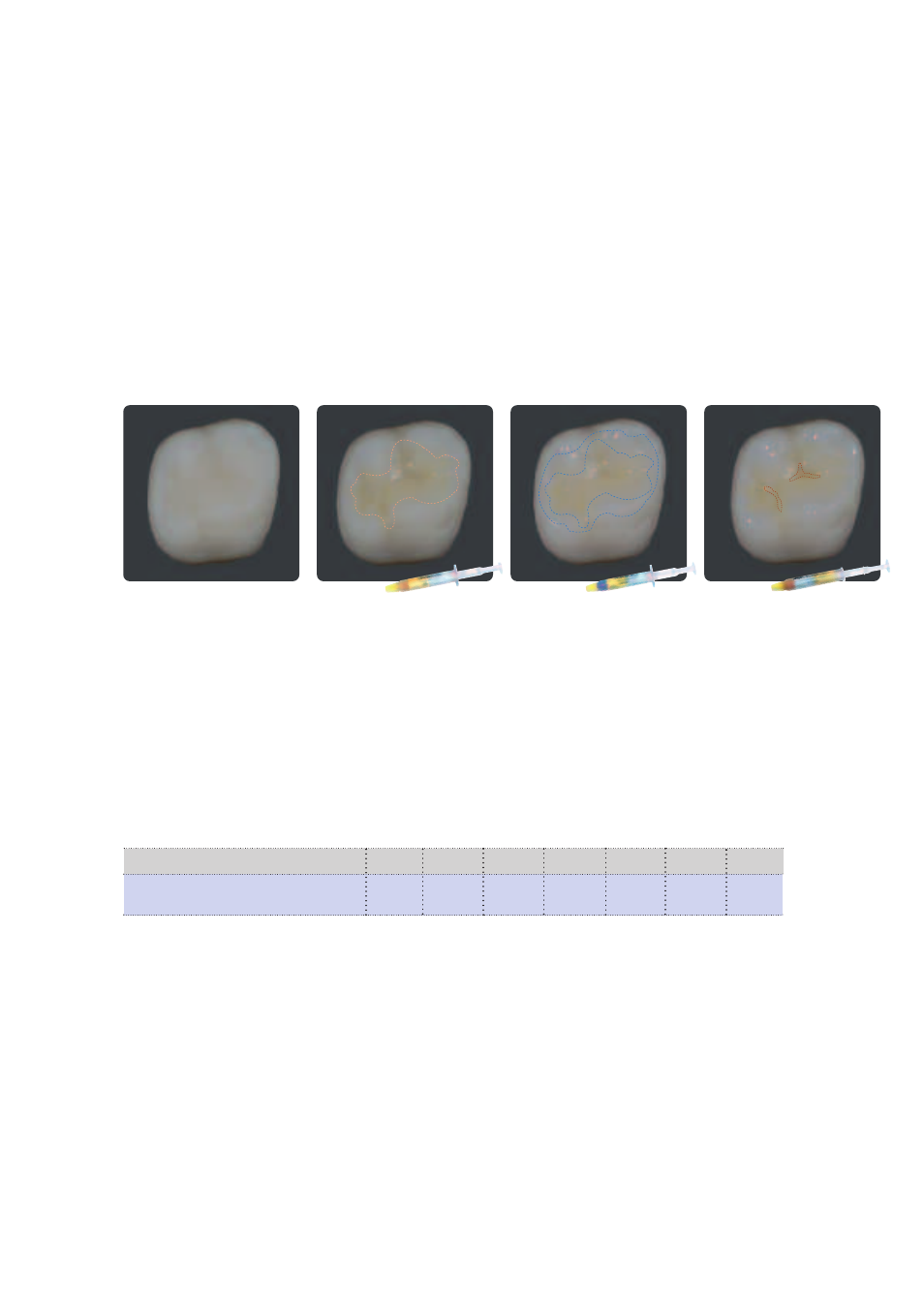Ivoclar Vivadent IPS Empress Esthetic User Manual
Page 33

33
IPS Empress Esthetic with IPS Empress Universal
B S
t
➚
T H
V
1
V
2
Stain and Characterization firing
403°C
6'
100°C
790°C
1–2'
450°C
789°C
757°F
6'
180°F
1454°F
1–2'
842°F
1453°F
Firing parameters for Stain and Characterization firing
(note the temperature control)
B = Stand-by temperature °C / °F
S = Closing time/minutes
t
➚
= Temperature increase rate °C/min. / °F/min.
T = Firing temperature °C / °F
H = Holding time / min.
V
1
= Vacuum-on temperature °C / °F
V
2
= Vacuum-off temperature °C / °F
Version B
Step 1 – Application of Shades/Stains:
– First, apply a small amount of IPS Empress Universal Glaze and Stain Liquid to assess the shade. This will provide better
wetting of the stains.
– Extrude IPS Empress Universal Shade or Stains from the syringe and mix thoroughly.
– Thin the material to the desired consistency using IPS Empress Universal Glaze and Stain Liquid.
– Apply the mixed Shades/Stain material.
– Intensify the corresponding dentin shade in the cervical and occlusal areas using IPS Empress Universal Shades.
– To imitate the incisal area and translucency in the incisal third, use IPS Empress Universal Shade Incisal.
– Apply individualized effects and characterizations using IPS Empress Universal Stains materials.
After staining and glazing, the Stain and Glaze firing is conducted in a compatible ceramic furnace (e.g. Programat P500).
The following points should be observed when placing the restoration in the furnace and setting the firing parameters:
– Place the restorations on the metal pins using a small amount of IPS Object Fix and position them on the honey-comb firing tray .
– As an alternative, the restorations can be supported with a firing pillow. Due to their lower position in the firing chamber, the
restorations are exposed to less heat. Therefore, in order to achieve the desired gloss, the holding time must be extended to up to
2 minutes.
– More intensive shades are achieved by repeated staining, rather than by applying thicker layers.
Starting situation
Occlusal area:
Shade 130
Fissure:
Stains orange
Incisal area:
Shade I1
